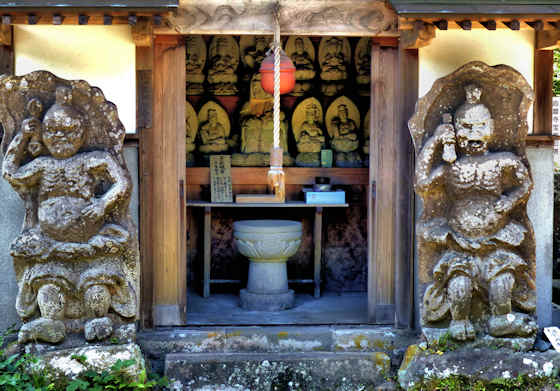Showing posts with label dragon. Show all posts
Showing posts with label dragon. Show all posts
Thursday, June 6, 2024
Enmeiji Temple 54 Shikoku Ohenro
Labels:
dragon,
ehime,
ema,
Fudo Myojin,
gyoki,
henro,
imabari,
mizuko jizo,
nio,
temple
Thursday, February 15, 2024
Takano Shrine Ninomiya of Mimasaka
The shrine is the source of several nationally recognized Important Cultural properties, including a pair of small, wooden komainu dating to the early 9th century, and a pair of wooden Zuijin statues dated to 1125. These are all now in a museum and can't be seen here.
Labels:
chugoku33,
dragon,
izumo kaido,
ninomiya,
shimenawa,
Shrine,
torii,
ugayafukiaezu
Wednesday, November 1, 2023
Inori no Sato Religious Roadside Attraction
Coming down from Unzen Hot Springs towards Obama on the coast of Tachibana Bay, the road is steep and without any settlements until just above the town.
It seems he is the chairman of a successful construction company and Inori no Sato is his attempt to contribute to the well-being and perhaps revitalization of the local area.
Labels:
dragon,
Fudo Myojin,
inari,
kannon,
kappa,
koshin,
kyushu108,
nagasaki,
obama,
shaka nyorai,
shichifukujin,
shimabara,
shotoku taishi,
tengu
Monday, October 30, 2023
Jimyoin Betsuin Temple
Labels:
aizen,
dragon,
Fudo Myojin,
nio,
sasaguri,
shichifukujin,
shingon,
temple
Wednesday, October 4, 2023
Oreki Temple 7 Kyushu Fudo Myo Pilgrimage
Labels:
dragon,
en no gyoja,
Fudo Myojin,
kannon,
Kunisakihanto Minemichi Long Trail,
kyushu fudo,
nio,
tendai
Subscribe to:
Posts (Atom)




































































